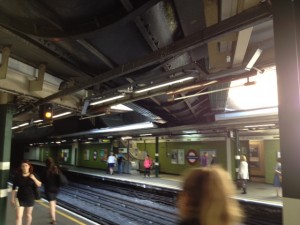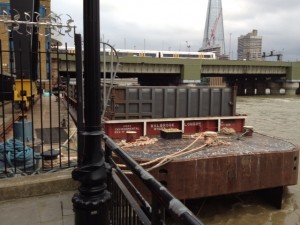There’s a huge steel pipe running above the trains in the Sloane Square station on the London Underground. Depending on the historical time period you’re talking about, you could call it the River Westbourne or the Ranelagh Sewer. As Paul Talling explains:
As this area developed into the desirable location it is today, the final stretch of the increasingly filthy Westbourne was culverted between 1827 and 1854 and renamed Ranelagh Sewer.
The Ranelagh/Westbourne dumped into the tidal Thames where the Chelsea Bridge is today, across from Battersea Park. The outfall was immediately adjacent to what was, until 1856, the intake for the Chelsea Waterworks Company which, John Snow wrote in his 1855 On the Mode of Communication of Cholera, “supplies some of the most fashionable parts of London”.
More on Snow later. Suffice for now to point out that it was Snow’s insights linking cholera to something icky in the water that changed modern medicine and public health.
“[C]ities,” wrote Steve Duncan, “are organic growths that re-use and build on their past. Therefore almost nothing in an older city is going to be perfect, because the systems and infrastructure in use are so often leftover from an earlier period of growth.” Early London grew up around the Westbourne and a host of what are now lost rivers – the Fleet and Walbrook especially in the area of town Lissa and I are staying – and then fouled them completely, and the Thames for good measure. You have to dump your shit somewhere.
So the old river courses were culverted over and then repurposed as sewers. Around the time Snow was doing his thing, the repurposed sewers were linked into a network that shunted the shit further downstream, while the Chelsea Waterworks people moved their intake upstream. It’s an imperfect system, but you work with what you’ve got, right?
We’re no drainers, but Lissa and I did find the end of the Walbrook the other night. It was the river that flowed through the old Roman London (the walled city, hence “wall brook”). Its outfall today is at Walbrook Wharf, where container ships fill daily with London’s garbage for the trip to Essex. Seems fitting.



Pingback: Stuff we linked to on Twitter last week | Highly Allochthonous